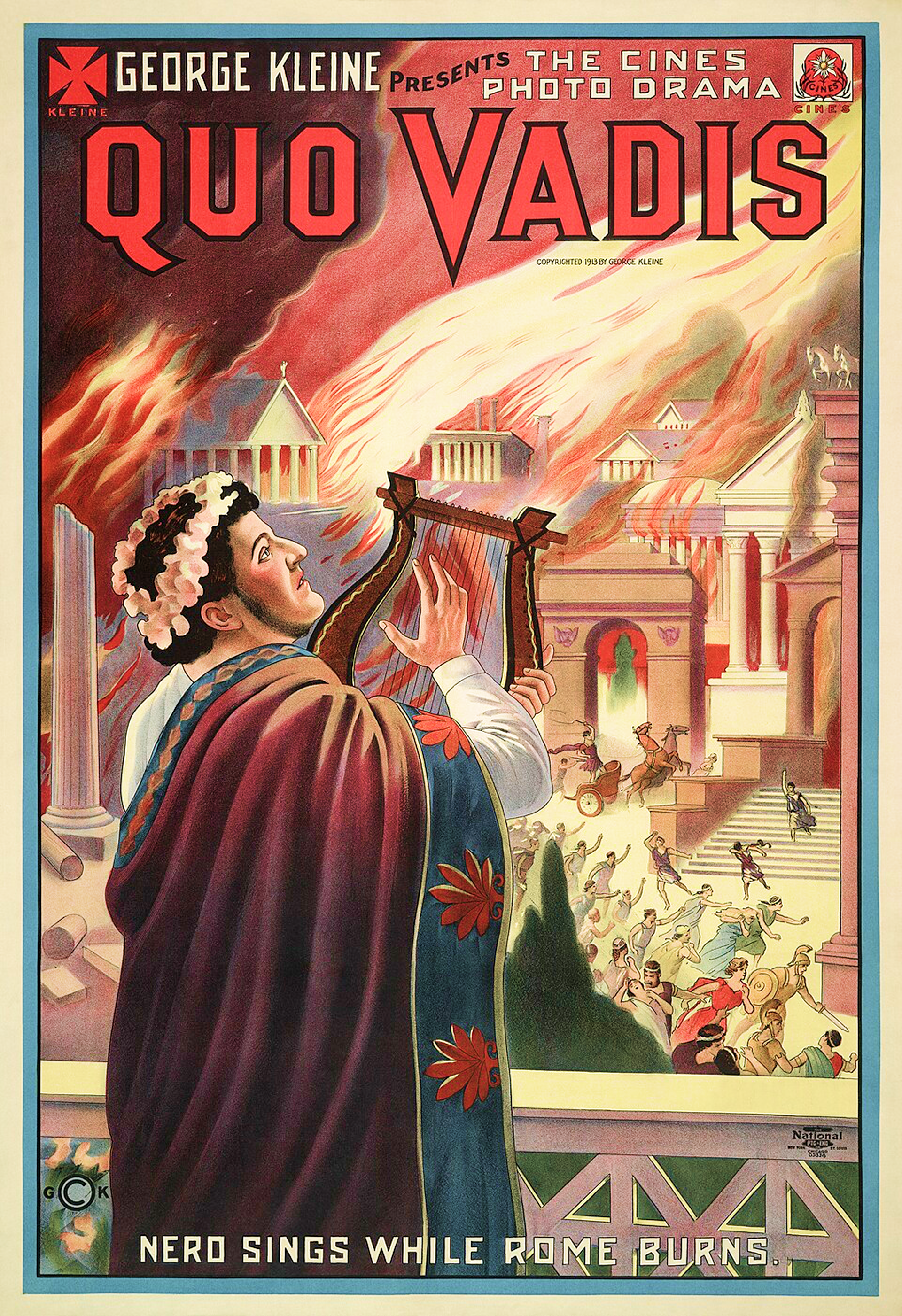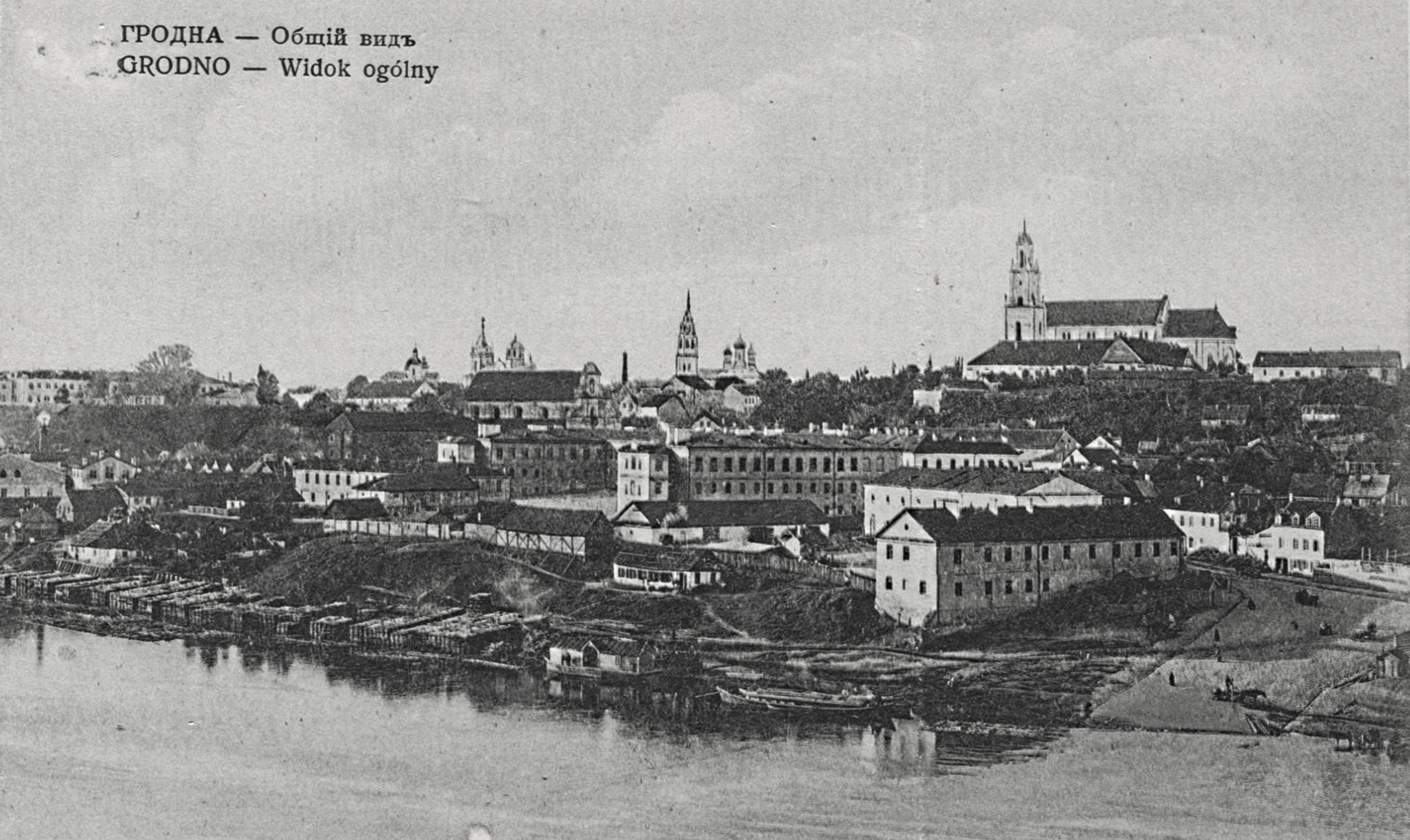A Golden Age of Belarusian Cinemas.
Polotsk • Grodno • Borisov
Polotsk
We found one reference here to the the self-proclaimed birthplace of Yuri Tarich, the father of Belarusian cinema. In 1911 there were two theaters there: Eden and Lotus.1
There is more information from an online article, Let's Go to Eden, or How and Where Movies Were Watched in Polotsk at the Beginning of the Twentieth Century. The writers of the article tell us that the Lotus opened in 1907 and closed two years later, so we should presume that there was a new Lotus in 1911. The article adds that a private entrepreneur, Mark Aronov, was the one who opened the Eden. Then, in 1912, he built a theater known as The Coliseum, which seated 300 patrons.2 Another article further describes the Coliseum: “The cinema hall could accommodate 310 people on individual chairs, and the second tier had another 44 seats in 12 loggias.”3
Polotsk, Spasskaya street. Beginning of the XX century.
Source: https://gorod214.by/new/3085
Grodno
Grodno had two theaters by January of 1913. The first, the Lux, run by Zavistovsky, in “the main and central part” of the city, on Muravyovskaya Street.
Cine-Phono Magazine
Grodno, Muravyovskaya street, 1913
Source: Public domain
Cine-Phono Magazine
We know that at least one of those two theaters had the opportunity to show one of the blockbusters of 1913, the Italian production of Quo Vadis?6 Well, it may have been a blockbuster in Europe, but when it was released to Russia in March 1913 (per Cine-Phono), but its prominence in ads quickly disappeared. We could find no records in the journals of showings in Belarusian territory, but that is no doubt an issue for the journals. An online article on early films in Grodno describes definitive evidence it was shown there, along with The Children of Captain Grant, which showed there in May of 1914, just before the war started.
Video of the famous silent film, “Quo Vadis?”
Poster from the American distribution of “Quo Vadis.”
Source: The National Ptg. & Eng. Co. (Chicago, New York, St. Louis), restored by Adam Cuerden, Public domain, via Wikimedia Commons
Grodno filmgoers faced some censorship. The online article: “Cinema, cinema, cinema — we are crazy about you. History of Grodno cinematography” states that the showing of "The Criminal Passion of the Father" was stopped by the police during the screening on February 6, 1914. Someone apologized to the audience and another film was shown. The drama about the depravity of aristocratic society caused quite a stir, which prompted the creation of a censorship body, which preceded the screening of films.7 The film was a 1913 effort by Evgeny Bauer, considered one of the greatest of the early Russian film directors. The Moscow Vedomosti wrote: "I have seen a lot of cinematic nasties, but I did not expect to see such a thing as "The Criminal Passion of the Father," which is now shown in all electrotheaters."8
Students were then encouraged to watch specially approved films, mostly "classics" — works by L. N. Tolstoy (The Fake Coupon), which was directed by Pyotr Chardynin, and a version of the A. S. Pushkin story Dubrovsky.9
“The Children of Captain Grant” Poster
Source: https://vgr.by/2021/03/19/sinema-sinema-sinema-ot-tebya-myi-bez-uma-istoriya-grodnenskogo-kinematografa/
Grodno, general view, 1904
Source: www.meshok.ru, Public domain, via Wikimedia Commons, 1903
Borisov
In mid-1910, Borisov had two theaters: the Ray, owned by “a well-known businesswoman, a certain K. A. Novozhilova [who was] , seduced by the unfinished, bright corner for the exploitation of the cinematographic enterprise” followed by Goldberg, who opened the Giant, “arranged on the model of one of the large Minsk cinemas, richly decorated, but flashily tasteless.” Novozhilova believed that Borisov could not support two cinemas, and so “prudently liquidated” the Ray.10
Borisov, Moskovskaya street, beginning of the XX century.
Source: Public domain
1 Kine-Zhurnal, No. 9, 5 May 1911, p. 14.
2 «Поехали в Эдем, или Как и где смотрели кино в Полоцке в начале ХХ века»/“Let's Go to Eden, or How and Where Movies Were Watched in Polotsk at the Beginning of the Twentieth Century” Gorod214, 12 Oct. 2017, https://gorod214.by/new/354 accessed 2025 Accessed March 10, 2025.
3 Сергеенка, Наталля/Sergeenko, Natalia «Как бизнесмен Марк Аронов изменил Полоцк в начале XX века: создал самый модный квартал города, привёз лучших деятелей искусства и развивал кинематограф»/“How businessman Mark Aronov changed Polotsk at the beginning of the 20th century: he created the most fashionable quarter in the city, brought in the best artists and developed cinema”/Gorod 214, 26 Jan. 2021, https://gorod214.by/new/6518 Accessed March 10, 2025.
4 Cine-Phono, No. 9. 19 January 1913, p. 31.
5 Ibid.
6 Тарасюк, Дзяніс/Tarasyuk Denis «Кино, кино, кино — мы без ума от тебя. История гродненского кинематографа»/“Cinema, cinema, cinema — we are crazy about you. History of Grodno cinematography”VG News Service, 19 March 2021 https://vgr.by/2021/03/19/sinema-sinema-sinema-ot-tebya-myi-bez-uma-istoriya-grodnenskogo-kinematografa/ Accessed March 8, 2025.
7 Ibid.
8 «Рецензия на фильм Преступная страсть отца»."Review of Criminal Passion of the Father" Московские ведомости/Moscow News 1914. The review is cited on a page, "преступная страсть"/Criminal Passion, https://www.kino-teatr.ru/search/171920716/229778// Accessed March 22, 2025.
9 Тарасюк, Дзяніс/Tarasyuk Denis «Кино, кино, кино — мы без ума от тебя. История гродненского кинематографа»/“Cinema, cinema, cinema — we are crazy about you. History of Grodno cinematography,”
10 Cine-Phono, No. 2, 15 Oct. 1911, p. 18; and Cine-Phono, No. 4, 15 Nov. 1911, p. 20.






